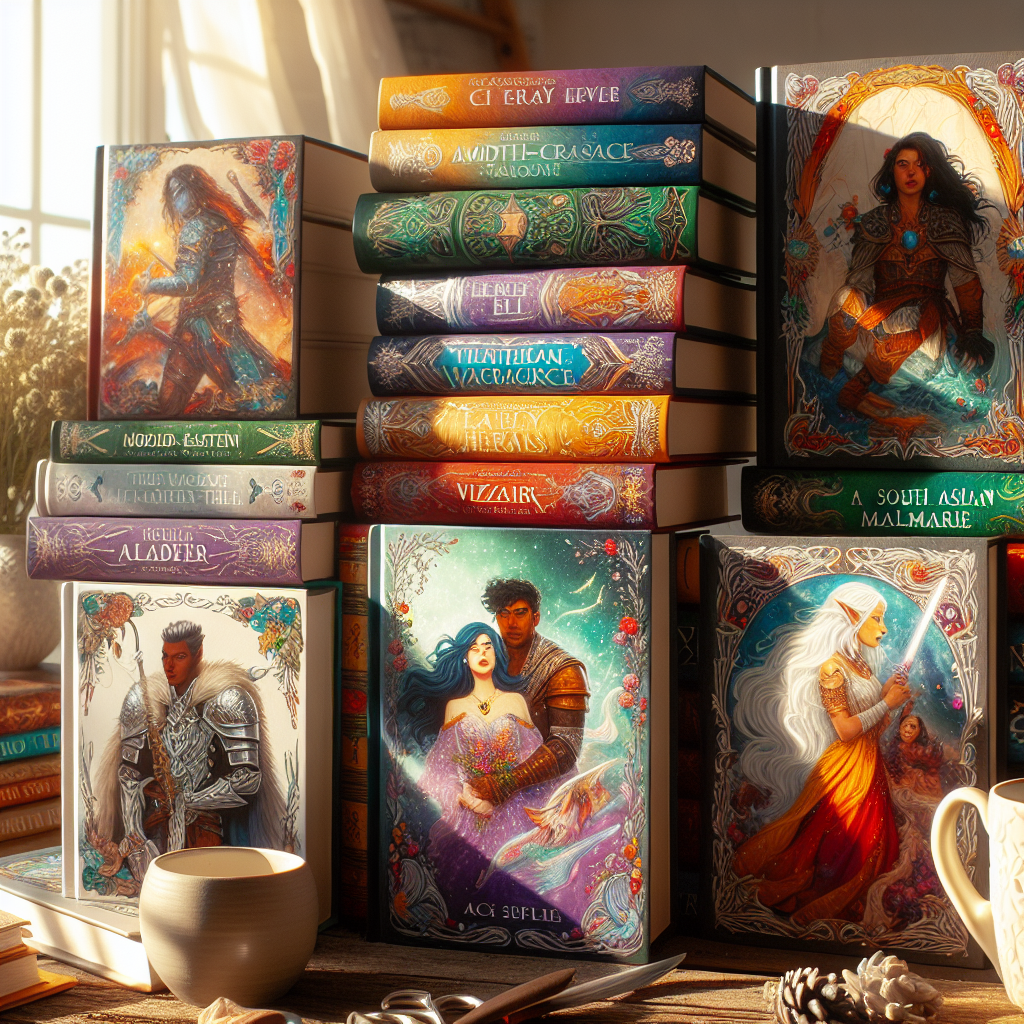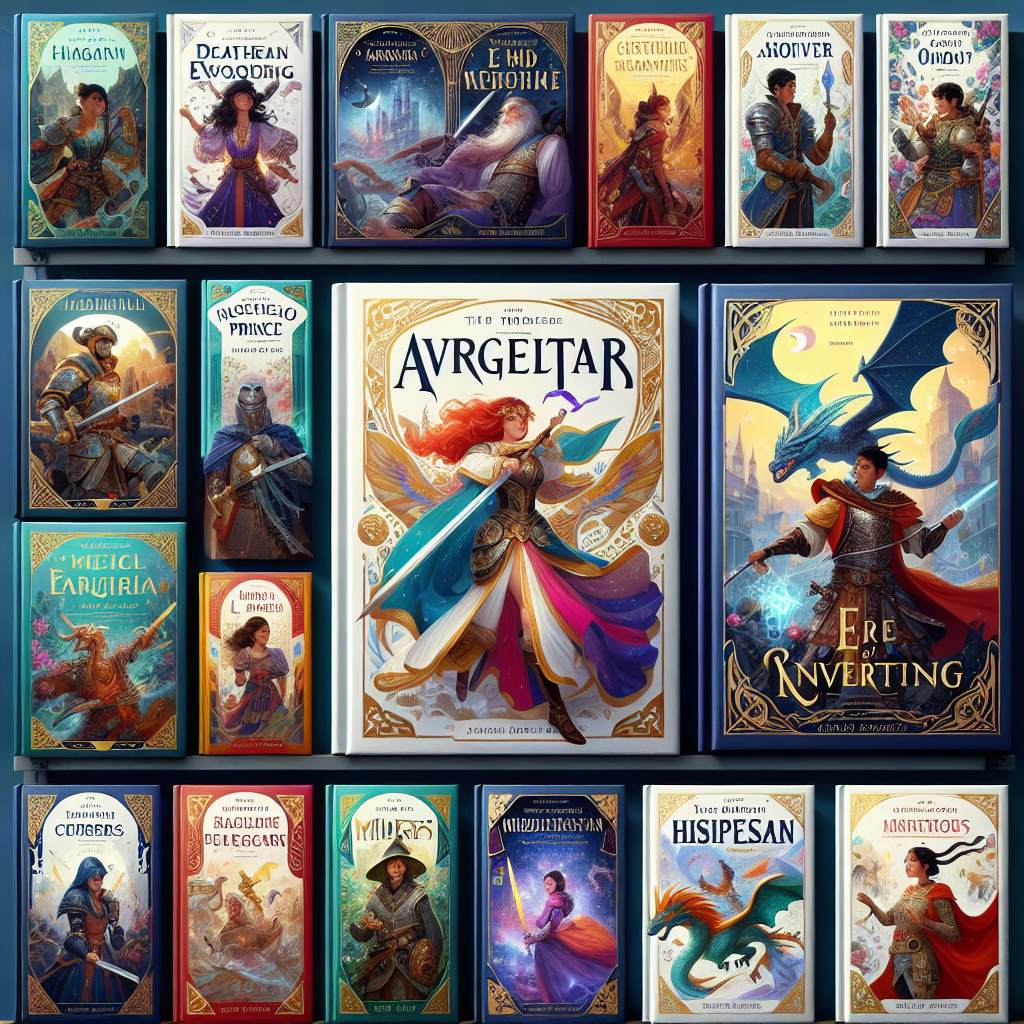As an Amazon Associate I earn from qualifying purchases.
Fantasy Books with Diverse Characters: A World of Inclusion and Magic

The realm of fantasy literature has long been a space where the impossible becomes possible. Dragons soar through the skies, wizards wield ancient magics, and heroes embark on epic quests. However, for much of its history, this genre has been critiqued for its lack of diversity, with many stories centering around characters and cultures that draw heavily from European myths and histories. In recent years, there has been a significant shift towards inclusivity, with a wave of authors bringing a rich tapestry of characters from a variety of backgrounds, cultures, and experiences to the forefront of their fantastical worlds. This article explores the importance of diversity in fantasy books, highlights some notable examples, and discusses the impact these works have on readers and society.
The Importance of Diversity in Fantasy Literature
Diversity in fantasy literature is crucial for several reasons. It allows for a broader range of stories and perspectives, enriching the genre with new myths, legends, and folklore from cultures around the world. This inclusivity also enables readers from various backgrounds to see themselves as heroes in these magical worlds, which can be empowering and affirming. Moreover, featuring diverse characters in fantasy books promotes empathy and understanding among readers by exposing them to different cultures, identities, and experiences.
Notable Examples of Fantasy Books with Diverse Characters
Many authors are leading the charge in creating fantasy worlds that celebrate diversity. Here are just a few notable examples:
- “Children of Blood and Bone” by Tomi Adeyemi – Set in a world inspired by West African mythology, this novel follows Zélie Adebola as she embarks on a quest to bring magic back to her people, fighting against a ruthless monarchy that suppresses it.
- “The Poppy War” by R.F. Kuang – Drawing inspiration from Chinese history, this gritty and dark fantasy explores the journey of Rin, an orphan who defies the odds to attend an elite military school and discovers she possesses a deadly, mythical power.
- “The Gilded Wolves” by Roshani Chokshi – Set in a lush, magical version of 19th century Paris, this book features a diverse cast of characters who come together to find a lost artifact. It explores themes of colonialism, identity, and belonging.
- “An Ember in the Ashes” by Sabaa Tahir – Inspired by ancient Rome and Middle Eastern cultures, this series presents a brutal world of oppression and resistance, following characters from different walks of life as they fight for freedom and survival.
These examples showcase the range of ways in which fantasy authors are incorporating diversity into their worlds, creating stories that resonate with a wide audience and reflect the rich tapestry of human experience.
The Impact of Diverse Characters in Fantasy
The inclusion of diverse characters in fantasy literature has a profound impact on both the genre and its readers. For one, it challenges and expands the traditional boundaries of fantasy, encouraging authors and readers to explore new narratives and perspectives. This diversity also plays a crucial role in representation, providing readers of all backgrounds with characters they can identify with and look up to. Furthermore, these stories can foster a greater understanding and appreciation of different cultures and experiences, promoting empathy and inclusivity.
Case Studies: Exploring Diversity Through Fantasy
To further illustrate the importance of diversity in fantasy literature, let's examine two case studies:
“The City We Became” by N.K. Jemisin
This novel, by three-time Hugo Award-winning author N.K. Jemisin, imagines New York City as a living, breathing entity that's born into the world through five individuals who represent the city's diverse boroughs. Jemisin's work is a powerful commentary on urban life, diversity, and solidarity, showcasing how different cultures and identities can come together to face a common threat.
“The Bone Witch” by Rin Chupeco
Rin Chupeco's “The Bone Witch” series introduces readers to a world inspired by Asian mythology, following the journey of Tea, a young necromancer who must navigate the complexities of her powers and the prejudices of society. Chupeco's storytelling not only provides a window into a richly imagined world but also explores themes of otherness, acceptance, and the strength found in embracing one's identity.
Conclusion: The Future of Fantasy is Diverse
The landscape of fantasy literature is evolving, with diversity playing a key role in shaping its future. As authors continue to weave inclusive narratives that reflect the world's rich variety of cultures, experiences, and identities, readers are treated to more engaging and meaningful stories. These diverse characters and worlds not only enrich the genre but also offer valuable insights into the importance of empathy, understanding, and representation. By embracing diversity, fantasy literature can continue to be a space where all readers can find magic, adventure, and a sense of belonging.
In conclusion, the inclusion of diverse characters in fantasy books is not just a trend but a transformative movement that is making the genre more inclusive, vibrant, and reflective of the real world. As we move forward, it's exciting to think about the new stories, characters, and worlds that await us, offering endless possibilities for exploration and connection. The future of fantasy is indeed diverse, and it's a future that promises to be as enchanting as it is inclusive.
Amazon and the Amazon logo are trademarks of Amazon.com, Inc, or its affiliates.






















































